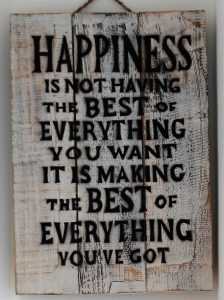
Creating a good balance of mind and body
Posted on June 6, 2024
Our recent blogs have been less about safety and more about the less focused-upon health – a mix of issues relating to the mind and the body.
 We have looked at happiness and mental health centring around annual days and weeks that highlight these topics. We’ve looked at tips for being happy at work and how that has a positive impact on mood and good mental health. They may be subjects we’ve covered before but we will write about them again because they are so important.
We have looked at happiness and mental health centring around annual days and weeks that highlight these topics. We’ve looked at tips for being happy at work and how that has a positive impact on mood and good mental health. They may be subjects we’ve covered before but we will write about them again because they are so important.
We’ve also taken a look at musculoskeletal health, why it’s on the increase and the importance of moving while at work to help ensure a more active life during retirement.
In this blog we will wrap it up for the moment with some simple tips for healthy joints that will help posture, body mechanics and spinal flexibility.
The importance of movement
If we want to have a healthy musculoskeletal system then we need to move more often and regularly. Healthy joints are important for a happy pain free life and a happy pain free life is good for the mind.
The wellness industry has exploded in recent years – who’s your guru of the month? It’s a wonder there’s any space for anyone to move with all the fitness and nutrition influencers jockeying for room with spiritualist and life hack experts!
Some fitness methods endure, of course, because they are tried, tested and tweaked over decades, if not longer, and more often than not they aid mental contentment. Movement and moderate exercise helps control weight and blood pressure, reduces inflammation and the risk of disease, prevents or treats chronic health conditions, assists in recovery from injury or illness, anxiety and depression, improves sleep and promotes mental, emotional and social health.
Movement is not about your weight or your shape, it’s about how efficiently you can use your body to move from a-b and being able to get your day done.
Pilates and yoga
Perhaps Joseph Pilates summed it up best in the very first paragraph of his 1945 book Return to Life Through Contrology (the original name for Pilates):
“Physical fitness is the first requisite of happiness. Our interpretation of physical fitness is the attainment and maintenance of a uniformly developed body with a sound mind fully capable of naturally, easily and satisfactorily performing our many and varied daily tasks with spontaneous zest and pleasure.”
I couldn’t have put it better myself! Yoga, like Pilates, too is heralded for its ability to improve flexibility, strength, mental health and stress relief. It’s also a contemplative and self-disciplinary practice that helps with overall well-being.
Five easy
Yet while I encourage you to practise either or take up running or weight-training, here are a five basic tips easily incorporated into daily life, especially at work, that will keep you supple.
- Find your starting point with the aim of building up to moving your joints regularly in as full a range of motion as possible, such as squatting to get your bottom as close to the ground as you can or rotating your wrists, ankles and neck in both directions.
- Consider your feet and think of their daily burden! Happily, better foot strength is easily achieved by pressing your toes into the ground for 10 seconds at a time and pointing and flexing your feet.
- Regular gentle movement should always be part of your day and whether you’re in a sedentary or more active job, explore movement in different directions. If you are sitting down for much of the day, try to move away from your workstation every 30 minutes. Do a few laps of the office, do some shoulder rolls or simple spinal twists and side bends.
- As we age we naturally stiffen, so it’s vital to change your behaviour if you aren’t exercising – leaning your bodyweight through your arms against a wall for example builds bone density, as does leaning your arms on the desk while sitting which improves shoulder strength. Gripping and un-gripping your hands improves both hand strength and the muscles in your forearms and shoulders.
- And finally the spine – as Pilates said: “If your spine is inflexibly stiff at 30, you are old; if it is completely flexible at 60, you are young.” Yet according to a June 2023 analysis in The Lancet Rheumatology, a whopping 619m people across the world experienced low back pain in 2020, making it the leading cause of disability. So we should prioritise changing our posture every half an hour or so when seated and encourage spine mobility. Try seated back extensions, forward bends, and torso rotations. At home, perform simple yoga stretches like downward dog and child’s pose which are great for suppleness.
And for me it all comes together in the poem, The Laughing Heart by Charles Bukowski. Here’s an extract:
…you can’t beat death
But you can beat death in life, sometimes
and the more often you learn to do it,
the more light there will be…
Move and move towards the light for a better balanced life.
